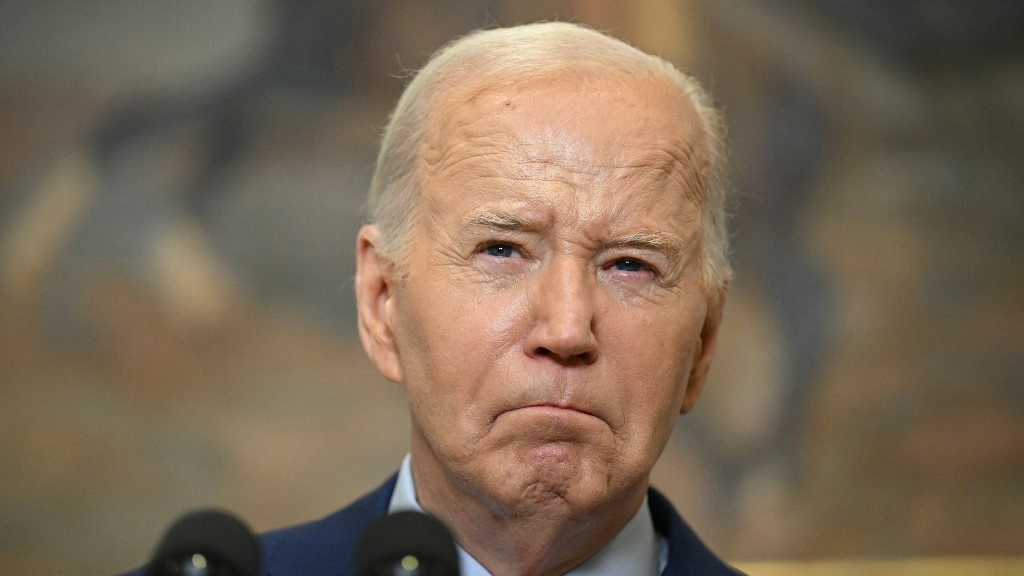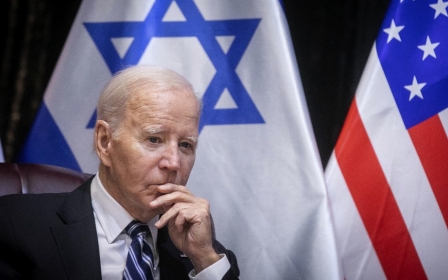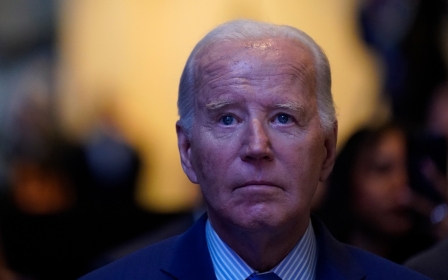War on Gaza: Why Biden's ceasefire speech was a sham

US President Joe Biden last week announced that “Israel has offered a comprehensive new proposal” - one that “brings all the hostages home, ensures Israel’s security, creates a better ‘day after’ in Gaza without Hamas in power, and sets the stage for a political settlement that provides a better future for Israelis and Palestinians alike”.
Why Biden decided to present this as an Israeli proposal instead of a US one is unclear. In the past, Middle Eastern politics was accustomed to US mediation and facilitation; now, Washington appears to be limiting itself to presenting Israeli proposals.
To a certain extent, this lends credibility to the argument that the US has always been Israel’s best lawyer. But the reality this time could be a bit more nuanced.
It is possible that what Biden presented is an American version of an Israeli proposal, which Prime Minister Benjamin Netanyahu was compelled to draft by members of his cabinet but could not make public due to the risk of breaking the fragile coalition.
The US administration might have decided to present it to corner both Netanyahu and the leadership of Hamas, as Biden seeks to calm domestic tensions ahead of November’s presidential election, while setting up Hamas to take the blame if the ceasefire proposal is not accepted.
New MEE newsletter: Jerusalem Dispatch
Sign up to get the latest insights and analysis on Israel-Palestine, alongside Turkey Unpacked and other MEE newsletters
It is not yet clear whether Hamas will accept the proposal, although its first reaction was described as positive; more news should hopefully come soon from Cairo and Doha.
Meanwhile, following its usual misleading script, the Netanyahu government is sending mixed signals about “its own” proposal. Some sources close to the prime minister say that Israel has accepted it, but that it would require some revisions.
Major obstacle
The ceasefire proposal envisages three phases, and it is not yet clear whether all of them have been accepted - not to mention the fact that according to far-right members of the Israeli government, this proposal is a non-starter.
Yet, these issues are objectively irrelevant, as three decades of sad experience suggest that a long process of beating around the bush will follow the proposal, with different interpretations floating around, as the usual blame games are played to attack one side or the other if the process reaches an impasse.
Follow Middle East Eye's live coverage of the Israel-Palestine war
According to a post on X (formerly Twitter) by Israeli journalist Barak Ravid: “Netanyahu told the Knesset foreign affairs and security committee that Biden didn’t present in his speech all the details of the Israeli proposal and stressed that on day 16 of phase 1 negotiations on a permanent ceasefire will begin and Israel will present its conditions.”
Thus, for the moment, it would be reasonable to assume that only the six-week first phase of the ceasefire proposal is workable, including a withdrawal of Israeli forces from all populated areas of Gaza; a release of female, elderly and wounded hostages in exchange for the release of hundreds of Palestinian prisoners; the return of Palestinian civilians to their homes, including in northern Gaza; and a surge in humanitarian aid, comprising 600 trucks a day, into the besieged enclave.
The omissions in the proposed deal look like chasms, with the Palestinian political perspective ignored
The real problems will come with the second phase, which foresees “an exchange for the release of all remaining living hostages, including male soldiers; Israeli forces would withdraw from Gaza; and as long as Hamas lives up to its commitments, a temporary ceasefire would become … the cessation of hostilities permanently”.
The notion of a “permanent” cessation of hostilities represents a big obstacle, because according to Israel’s longstanding position, only the complete destruction of Hamas could make this possible. The problem is, nobody has yet defined what the “complete destruction” of Hamas would look like - and nobody is in a position to unquestionably certify the total elimination of the Palestinian group.
The proposal that Biden presented aims to end the conflict, get the hostages home, facilitate massive aid delivery to Gaza, and eventually start the territory’s reconstruction. In other words, it aims to restore the status quo prior to 7 October 2023. This is precisely the deal’s limitation: not what it offers, but what it omits.
Failed policies
It is widely known that in order to work, diplomacy sometimes needs constructive ambiguities - but in this case, this tool seems overused.
It is also tempting to ask why Hamas would accept a proposal whose clear aim is to create “a day after in Gaza without Hamas in power”, with the Israeli corollary of the group’s complete destruction?
As to the aim of reestablishing the status quo ante, it is worth noting that it is precisely this decades-old, untenable (for Palestinians) situation that triggered the 7 October attack by Hamas, which is considered a terrorist group in the UK and other countries. Simply re-establishing such a situation is certainly not a recipe for peace.
The omissions in the proposed deal look like chasms, with the Palestinian political perspective ignored. Biden’s speech never mentioned a two-state solution or a Palestinian state, with just one single, vague reference to Palestinian self-determination.
The only honest words he uttered were in addressing the Israeli people, as opposed to their government: “And to the people of Israel … I ask you to take a step back and think what will happen if this moment is lost. We can’t lose this moment. Indefinite war in pursuit of an unidentified notion of ‘total victory’ … will only bog down Israel in Gaza, draining the economic, military and human resources, and furthering Israel’s isolation in the world.”
The speech was truly disheartening, focusing almost exclusively on Israeli security, with an ultimate goal to ensure “Israel could become more deeply integrated into the region, including … a potential historic normalisation agreement with Saudi Arabia. Israel could be part of a regional security network to counter the threat posed by Iran.”
Biden was then generous enough to dedicate 27 words to outlining a political perspective for Palestinians after decades of Israeli occupation: “And all of this would create the conditions for a different future and a better future for the Palestinian people, one of self-determination, dignity, security and freedom.”
This “path”, of course, will only be available after the “Israeli proposal” is accepted by Hamas - when it is not even clear that it is accepted by the Israeli government - and likely then only after an Israeli-Saudi deal. In other words, the US is sticking to decades-old failed policies and practices.
Thus, the Palestinian people’s path towards their own state and an end to the occupation - the only conditions that can create a real and sustainable security for Israel - will continue to be long and painful, and most probably will never see the light at the end of the tunnel. The US approach of restoring the status quo risks leading to another 7 October tragedy in the future.
The views expressed in this article belong to the author and do not necessarily reflect the editorial policy of Middle East Eye.
Middle East Eye delivers independent and unrivalled coverage and analysis of the Middle East, North Africa and beyond. To learn more about republishing this content and the associated fees, please fill out this form. More about MEE can be found here.






